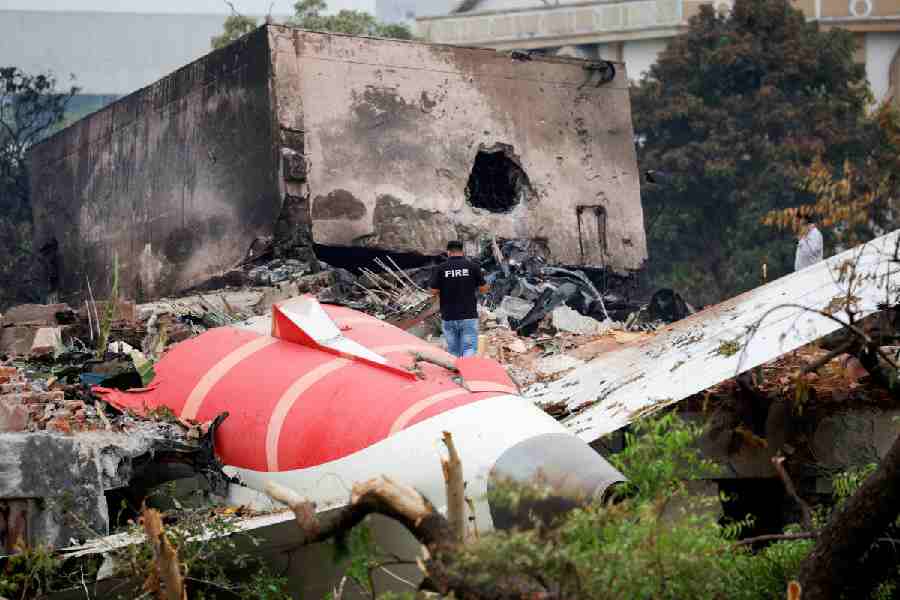|
|
| Strand Road warehouse: part of the design |
Conservation architect and activist A.G. Krishna Menon, in a review of the proposals made by students of the department of landscape architecture of the University of Illinois on tourism development in Sarnath, the Taj Mahal and the Champaner-Pavagadh Archaelogical Park, underlines the fact that institutions and business interests from the West can easily sell their most preposterous and naïve proposals to agencies of governments in India, be it Central or state.
Throwing light on an aspect of the Taj corridor scandal that is rarely aired, Menon writes: “The tragedy I wish to underscore in the scandal that erupted after the Minister of Culture and Tourism, Jagmohan, ‘discovered’ this project under construction, is not the complicity of the officials and the politicians in breaking laws (and perhaps diverting public funds for private benefit) which is being investigated by the Central Bureau of Investigation, but the fact that they sincerely believed that this was a worthwhile project”.
Even after over half a century of independence, our mindset has not changed. When it comes to the West, we happily take the plunge, no questions asked. That the leftist government that has ruled Bengal for the last 25 years is no less gullible became adequately clear by the alacrity with which it appointed British experts to refurbish and beautify the Hooghly riverfront and the derelict warehouses along the river that were once the lifeline of the raj’s trade and commerce.
The British experts came, they saw, held a few workshops where they condescended to invite local professionals, threw a much-hyped party — the carnival at the Millennium Park — and conquered the project without much ado. Local participants felt the British had not done a proper backup study and had no clue about the impact the planned entertainment and shopping centre will create on the infrastructure once it takes shape. The Dalhousie Square area is an intense activity zone, nowhere comparable to any neighbourhood in London. Think of its phenomenal fixed and floating population and traffic. The British team picked the brains of Calcutta representatives but curtly shot down all suggestions that were not on their agenda. If the Bengal government was eating out of their hands, why should they bother?
Every such public project has various possibilities. This one, however, will be the perception of only a single team that has already made up its mind, as opposed to the various perspectives that could have emerged through overall participation.
As for the vaunted Millennium Park, which, too, would not have happened without British instigation, has it really linked with the city in the way that the promenade from Prinsep’s Ghat up to Eden Gardens used to once? The park has at best attracted limited participation. It is unfair to compare it with Durga puja crowds or SUCI rallies. Even the ghats and the Mullickghat flower market witness more vibrant activity.
And to think that for the past several decades an Indian architect of international repute, Charles Corrrea, had cried himself hoarse trying to convince the state government that the city of Calcutta should be a celebration of the River Hooghly from which it had both literally and metaphorically emerged. Though he had shown much interest in any project that would give back the riverfront to the people, Correa was ignored.
Now 300 metres belonging to the Calcutta Port Trust has been handed over to the Calcutta Metropolitan Development Authority for development and beautification as an extension of the Millennium Park. The stretch will be marked a heritage zone, and although it is public space, technical expertise is being sought from the London River Association without even taking public opinion into consideration. The government did the same when it bestowed the plum job of constructing the City Centre in Salt Lake on the Bengal Ambuja group. If he has his way, mayor Subrata Mukherjee, too, will foist architect Dulal Mukherjee’s monstrous construct and dub it the entrance to Calcutta.
In 1856, during the rule of Lord Dalhousie, by which time the lottery committee had already constructed Strand Road, the level of the road to the river was raised by dumping garbage collected from the city, all the way from Fort William to the silver mint near Burrabazar. Since then this entire stretch has been earmarked for the convenience of the people and for the port and the jetties. No highrise was to be built there.
In 1872, when the land was handed over to the Calcutta Port Trust to build jute warehouses, the then Justice of Peace, Sir Stuart Hogg, had strongly protested the move. Now the land is going back to the people. But one cannot miss the irony in the situation. The Brits had deprived the citizenry of direct access to the river to spin money. Now British businessmen have been hired to secure deliverance.
When a project is in the public domain, the global norm is to hold either a design or a concept competition. This is not a luxury that only the first world indulges in. The website, “Death by Architecture”, has a seemingly endless list of such competitions held at all corners of the earth. One of the most publicized ones in recent times is the post-9/11 Lower Manhattan project, if only the competition was “intended to generate creative and varied concepts to help plan the future of the site.”
The Earthquake Post-Disaster Recover Commission of Taiwan held the Chichi Earthquake Memorial competition last year. In 2002, architects from around the world were invited to engage in the creative design competition for the Great Egyptian Museum.
Back home, too, architectural competitions are not exactly unknown. It was only in 2001 that the Calcutta Municipal Corporation held such a competition for the revival of the gutted Star Theatre. In 1999, the Calcutta Port Trust sponsored a similar exercise to build the Maritime Museum at Science City.
However, when it came to the Calcutta riverfront, the people of Calcutta were given a fait accompli. Apparently, the project went to the British agency on the strength of its past experience in the regeneration of the Thames and London. But the track record of even the cream of British architects is not really flawless.
Think of the mega-dollar structures built in London to usher in the millennium. “London eye”, the giant ferris wheel erected on the Thames embankment missed its premiere after it developed some fault. The breathtaking Millennium Bridge, linking St Paul’s cathedral with the Tate Modern Gallery, had to be closed as it would wobble every time pedestrians stepped on it. Norman Foster, who designed it, is of international repute. The Millennium Dome has bled the National Lottery Funds so that people wonder why it was constructed at all.
Nobody is infallible. The criterion is not who is better equipped but whether the end result will be more appropriate to the populace, climate and topology. In Mumbai, Phoenix Mills has been converted into a shopping and entertainment mall that has alienated the working class people of the locality. Whoever handles the project, the brief for the design must emerge locally with the consensus of the people. Or else it will be a false front, like the fake villages Potemkin had built along the route of Catherine the Great. Do we want a Potemkin village at the Strand?











